This post may contain affiliate links. We may receive a small commission, at no cost to you, if you make a purchase. Read Disclosure.
While residents of Buenos Aires spurn the moniker, there’s really no denying that Buenos Aires’ nickname as the “Paris of South America” is fitting – the architecture doesn’t lie.
Despite being labelled the most European city of South America, and the Argentine capital is more than that – it’s a city of green spaces, cobblestone streets, artsy neighborhoods and some of the best restaurants and cafes in the country.

It’s a cosmopolitan city with a clearly defined Latin America twist, and not a city to miss on your travels.
However, it’s also a city that can be overwhelming and confusing for first time travelers, so before visiting Buenos Aires Argentina, be sure to make a note of some of these important things you need to know before you go to this whirlwind of a city.
Things to Know Before You Visit Buenos Aires
1. Buenos Aires has two airports

First things first: after you book your flights to Buenos Aires, you’re going to need to make note of which airport you fly into.
You’re most likely arriving at Ezeiza Airport (EZE) which serves international flights, but if you’re then traveling domestically within Argentina, you’re probably going to be flying in and out of Aeroparque Jorge Newbery (AEP).
This is important to know if you have a connecting flight upon arrival.
Important to know because these two airports are 41 kilometres apart and the trip between the two can take more than two hours in peak-hour traffic, so plan your travels accordingly.
2. Stay for three days in Buenos Aires (minimum)

This is not a city to breeze through, it has so much to see and do and you will want to spend some days sitting in restaurants, bars and cafes and soaking in Argentinian culture.
I recommend spending at least three days in Buenos Aires – or even a week!
There are so many things to do in Buenos Aires, such as museums and cultural centers to see, parks to lounge in, trendy neighborhoods to explore, tango to be danced, and more steak to eat than you can poke a stick at.
3. Public transportation is cheap
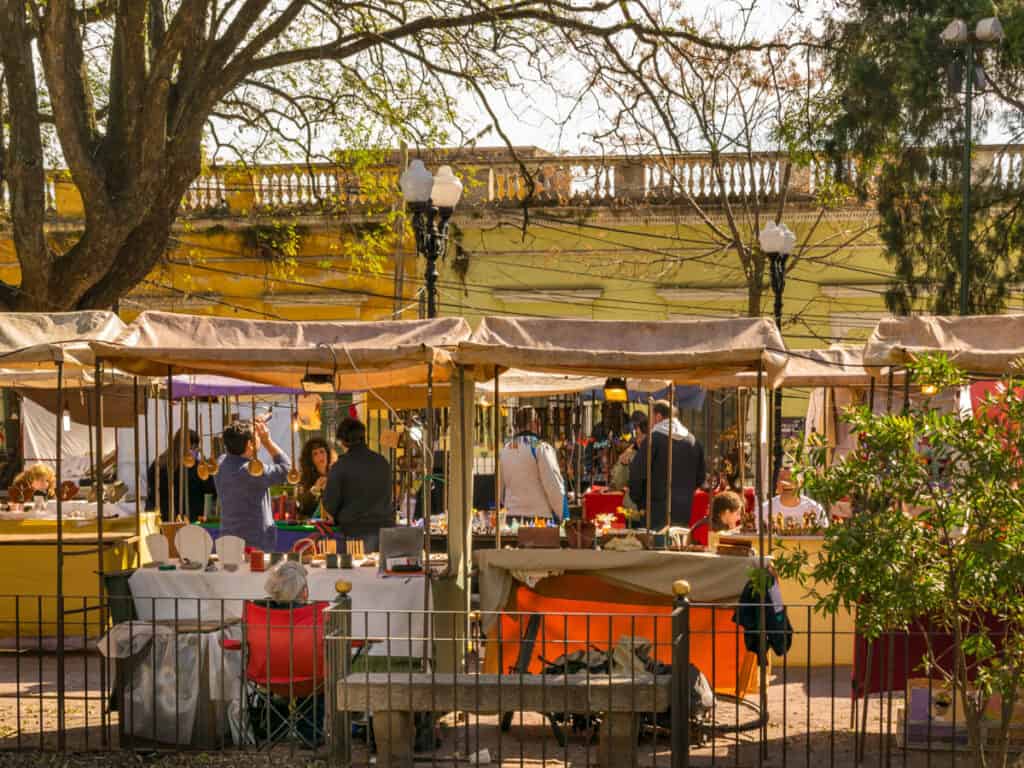
Getting around Buenos Aires is easy – and fairly cheap. Buses will get you to most areas of the city, and there is also a subway which connects most of the neighborhoods in this metropolis.
You’ll need a SUBE card, which can be purchased from most kioskos (convenience store) or subte (the metro system) ticket windows. You can’t purchase them on board the bus!
Once you have a SUBE card, you’ll be able to ride colectivos (buses), the subte or the aboveground trains (which tend to go to the outer neighborhoods). The Cómo Llego app is handy to check how to get from A to B.
Taxis are everywhere – it’s rare to step out on to a street and not have a taxi pull up within a few minutes. Simply raise your arm to hail a taxi. You can also use a ridesharing app – Uber is the one to use in Buenos Aires. It’s actually quite cheap.
Check a map before you head out, as it’s handy to know the cross streets of where you’re headed to; most taxi drivers use those to navigate. Make sure your driver turns on the meter when you get in.
BA Taxi and EasyTaxi are both apps that hail taxis from your phone if you prefer. Uber is in Buenos Aires, but it’s not legal so take care if you do decide to use Uber (i.e. Sit in the front of the car so it doesn’t look like an Uber!)
4. Get cash out from Western Union

Argentina’s economy is in a constant state of flux – it’s really hard to keep up with where the peso is going.
Prices change regularly and the inflation rate is all over the place.
While Argentina can be an affordable destination, some things may be more expensive than expected.
Do not withdraw money from an ATM, as this uses the exchange rate drawn up by the banks. The locals use what they call the “blue dollar rate,” which is a parallel dollar rate of USD in Argentina. If you transfer money to Western Union and withdraw it, you get twice as much money.
Don’t ask me how this works, I have no idea, all I know is that it does.
If you find yourself complaining about the prices, spare a thought for the Argentine’s who work hard but watch their salary stay the same while prices continually creep up.
Western Union often run out of cash, especially on Fridays, so be sure to take cash with you in U.S. dollars or Euros. You can have it changed in Argentina by visiting the exchange shops. Just listen for the hawkers shouting “cambio, cambio, cambio!”
Bring large bills that are free of tears, creases, or marks.
Ask your hotel for a recommendation for a money changer – they literally stand in some streets but it’s intimidating for a visitor to change money this way!
Change your pesos into smaller notes so you have change to use in shops.
Credit cards are accepted in hotels and restaurants that are used to tourists, but will be on the official rate, not the blue dollar rate.
You’ll find that most places don’t have the infrastructure to accept credit cards or will add a surcharge. Some hotels will demand you pay for a room in cash in USD.
5. Don’t think you know how to speak Spanish

So you think your high school Spanish will get you by when you visit Argentina? Think again! Argentine’s speak Spanish, but in Argentina it’s Castellano.
You’ll hear vos used instead of tú, and the “ll” sound is more like “zh” that’ll leave you scratching your head.
Someone once said to me that Argentine Spanish is like regular Spanish but with an Italian accent.
Buena suerte!
6. The steak is really that good
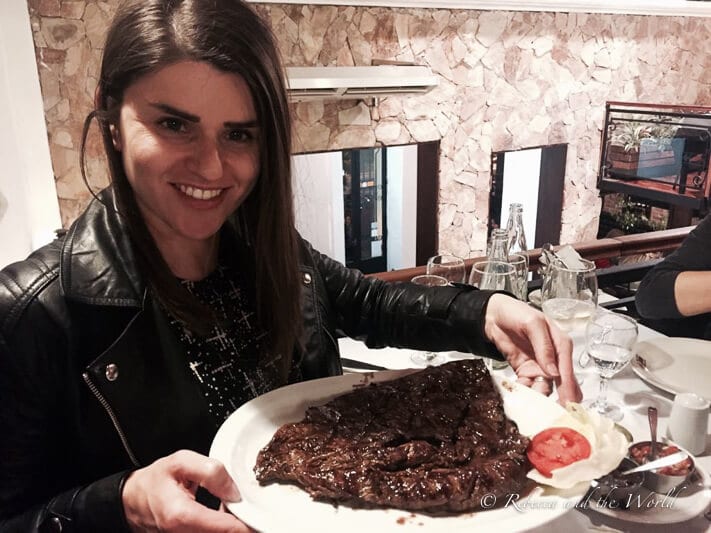
Don’t expect to be eating veggies when you explore the city of Buenos Aires. The closest you’ll get is the salad that’s served at every steakhouse before your steak comes out.
Argentine’s eat around 120 pounds of beef each year, which puts them in the number 2 position for consumption of beef (just behind neighboring Uruguay, also a country of meat lovers!).
One of the top Buenos Aires things to do is eat some amazing steak. Make sure to visit a parrilla (steakhouse) during your visit. Some of my favorites are:
To order steak, you can ask for it jugoso (medium rare), a punto (medium) or bien cocido (well done).
Look for a restaurant offering a traditional asado – an Argentinian technique for slow-cooking meat over a grill or parrilla.
Beyond steak, Buenos Aires has restaurants of all cuisines and to suit every budget.
7. Buenos Aires is ice cream heaven
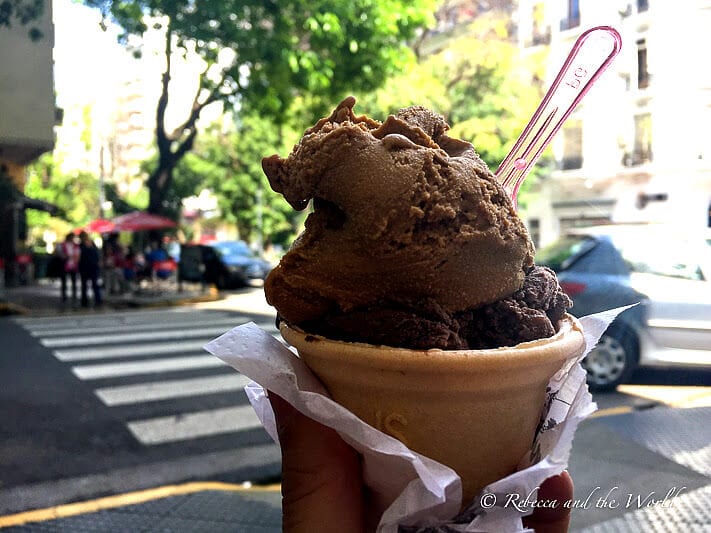
I never realised how much I needed ice cream in my life until visiting Buenos Aires.
On every corner is an ice cream shop selling the creamiest, most flavorsome ice cream I’ve ever had in my life.
The Italian influence in Argentina is to be thanked for this gift. Make sure you try dulce de leche flavour, a creamy caramel.
My favorite ice cream shop is Rapa Nui (address: Uruguay 1284) where you will be overwhelmed with the amazing flavors for sale. Freddo and Volta are chain stores which are all across the city.
8. What is that on my bill?

When you get your bill (la cuenta) at the end of a meal, you may wonder what a few charges are.
The cubierto is not a tip – it’s actually a small charge to cover bread and the cutlery you’ve used.
While it’s old fashioned, you’ll find it on the bill in most restaurants. Tipping isn’t usually expected, but 10 percent is pretty common.
North Americans may find it strange that water isn’t free – you will pay for sparkling (con gas) or still (sin gas) water, but it’s quite cheap.
9. Discover the city’s hidden cocktail bars
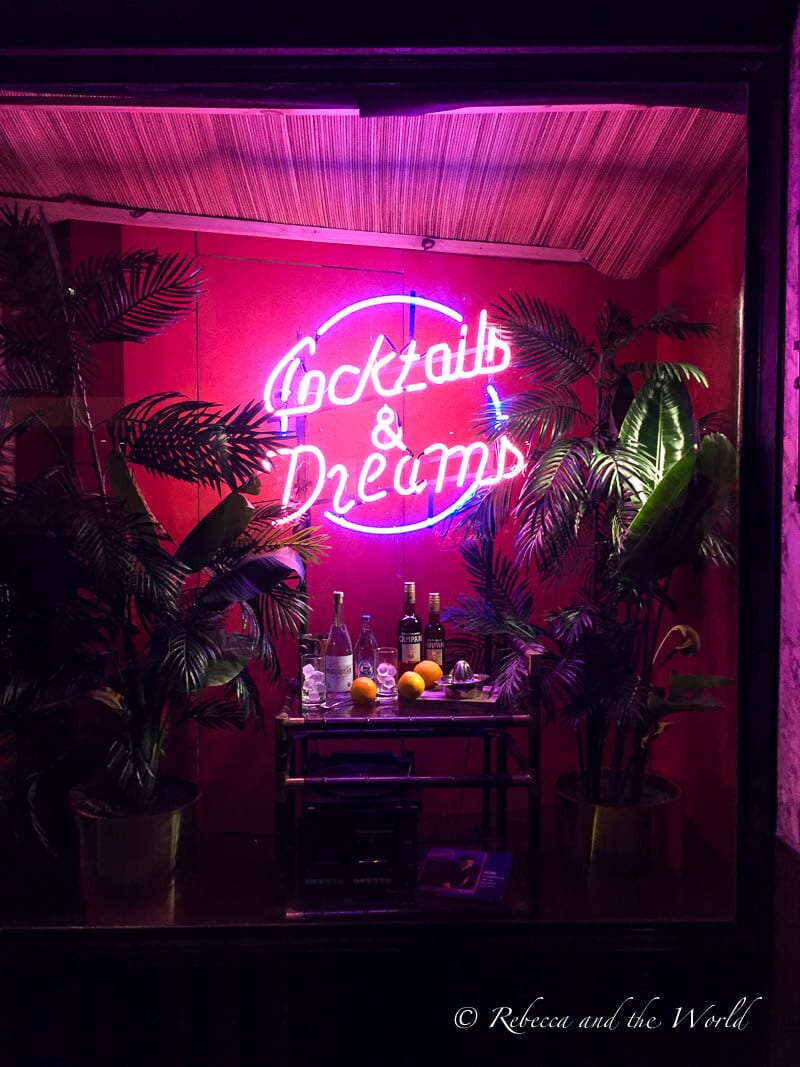
While Argentina may be rightly famous for wine, it’s worth checking out a few of the city’s secret cocktail bars – some of which require James Bond-style methods to get in to.
At Frank’s Bar (Arévalo 1445), the race is on to crack a few codes, the final one of which you’ll need to enter into a phone booth to reveal the bar.
Florería Atlántico (Arroyo 872) is a popular bar, which can only be entered through a huge refrigerator door inside a florist shop.
At Victoria Brown (Costa Rica 4827), you’ll need to find the door to get into the bar (spoiler: push the brick wall at the back of the café, it’s actually the door!).
Make sure to try fernet, a bitter liqueur usually served mixed with Coca-Cola. It’s a bit medicinal tasting for me, but when in Rome!
10. Buenos Aires is a city of night owls

If you’re usually in bed by 9 p.m. then you’re in for a shock – people are barely even heading out for dinner at that time!
Restaurants in Buenos Aires start filling up between 9 and 11 p.m. (and later) and it’s easy to tell who the tourists are by walking past a restaurant at 7 p.m.
If you’re up for some Buenos Aires nightlife, you’ll need a nap to get you ready – nightclubs and bars aren’t really happening until 2 a.m.
11. You can get a leather jacket made in a few days
In the land of beef, of course there’s leather. You can have a leather jacket custom made in only a few days.
Bring a picture of something you like, have your measurements taken and voilà, you’ll be taking home a stylish souvenir.
If a leather jacket isn’t what you’re after, you can have something else made: skirt, boots, overnight bag, gloves – anything you want, really.
12. Keep an eye out for theft
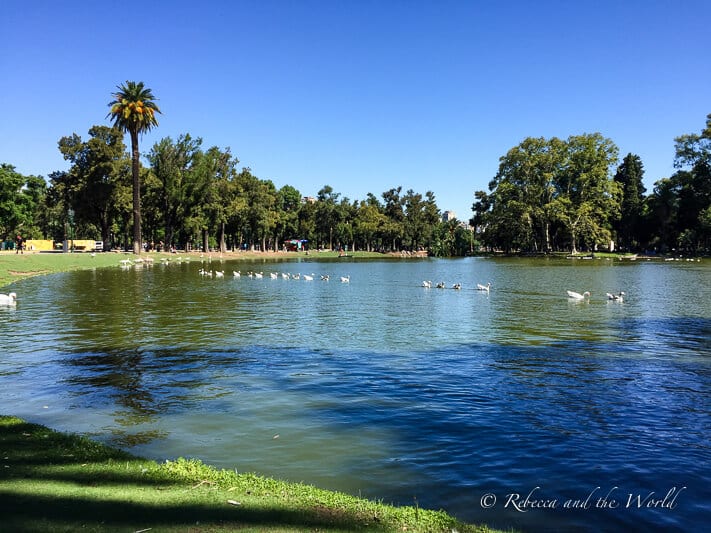
Buenos Aires is generally a safe city, but like most major cities, it’s best to be aware of your surroundings at all times.
The city isn’t immune to petty theft and pick pocketing does occur – it happened to me and those guys are fast.
Also be careful inside taxis if you have the windows down or while walking along the street – thieves do come by on motorbikes to steal items right out of your hands.
Never leave your mobile phone or handbag on a table or on the back of your chair in a restaurant – the thieves are so good here they’ve even been known to steal from right under the Secret Service’s nose!
Having said that, if you’re sensible you’ll have no troubles in Buenos Aires.
13. The best time to visit Buenos Aires is Spring

While you can visit Buenos Aires year-round, spring is the best time to come. The weather is milder and the jacarandas that line the wide boulevards are in full bloom – it’s a beautiful sight.
Summers are hot and humid so prepare to be sweaty. There are plenty of parks, however, to cool off in. Keep in mind that Christmas and New Year are times to be with family, so you’ll find the city to be quieter than at other times.
I was surprised to find that there was no wild New Year’s Eve party given porteños’ propensity for a good time!
There’s no snow, but winters in Buenos Aires can be miserably cold and rainy. Still, it’s not a bad time to visit the city if you can stand the weather.
14. Watch out for dog poop!

There are so many beautiful buildings, you may find yourself constantly looking up in awe. But make sure you keep an eye on the footpath as well!
Porteños don’t seem to be that good at picking up after their dogs, so it’s inevitable that you’ll step in some dog sh*t at some point during your trip!
15. Know the best neighborhoods in Buenos Aires

There are many trendy barrios (neighborhoods) in Buenos Aires to explore. The main centre is around Plaza de Mayo, which has a few tourist attractions such as Plaza del Congreso, Casa Rosada, and Palacio Barolo.
It’s sometimes referred to as the barrio, and is a tranquil and interesting place to stay, with its cobblestoned streets and historic buildings.
This is a good place to stay for your first visit, and it’s easy to walk to other neighborhoods via Avenue 9. You can also go to the Teatro Colón for an Argentinian opera.
For a more hipster vibe, Palermo is a popular area. It’s now the “expat” and “digital nomad” neighborhood and is where most of the remote workers base themselves. It’s made up of many smaller barrios and you’re most likely to end up here at some point. If you like restaurants, nightlife and shopping, Palermo is where you’ll be right in the thick of it.
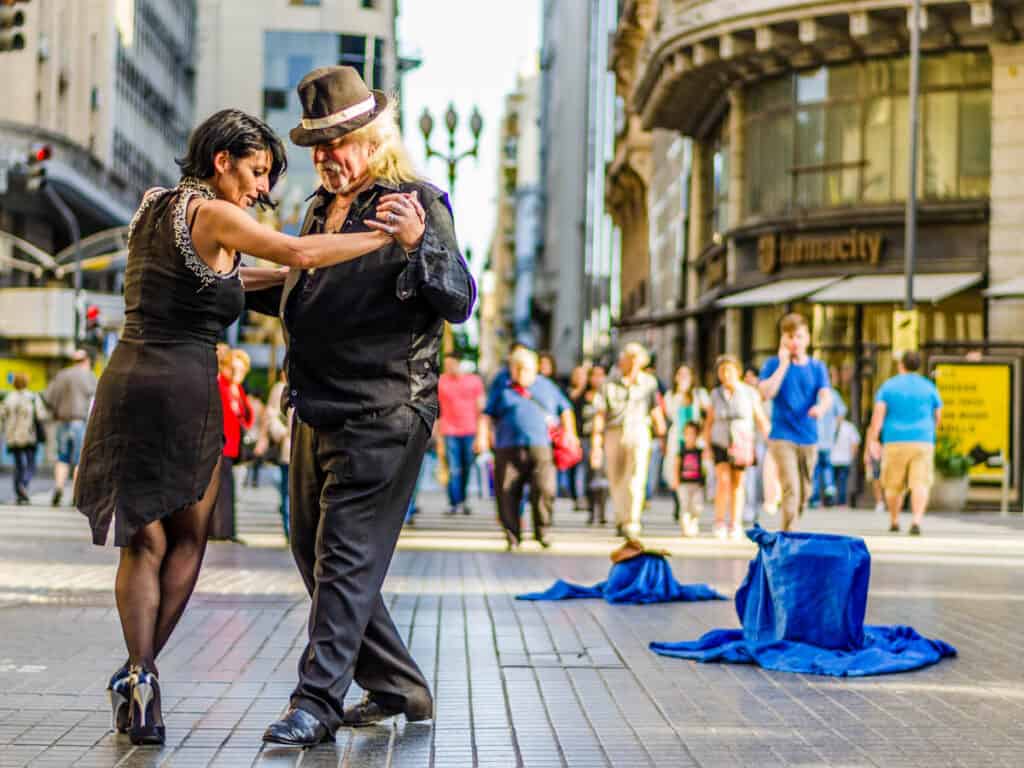
Another neighborhood that’s good for your first time is Recoleta, one of Buenos Aires’ most elegant neighborhoods. It’s lined with luxury stores, and ornate statues. It’s a quiet neighborhood, but there’s still plenty to do here.
It’s also home to some of the most popular Buenos Aires attractions, including Recoleta Cemetery, Museo Nacional de Bellas Artes and El Ateneo Grand Splendid bookstore (inside an old theatre). This is the neighborhood I lived in when I lived in Buenos Aires.
Every Sunday, San Telmo hosts the bustling San Telmo Market, a huge street fair over dozens of blocks. This neighborhood is known for its flea markets and antique shops, tango bars and live music, and cute cobblestone streets.
An up and coming neighborhood is Puerto Madero, which is the waterfront area in the Central Business District. It’s quite upscale and classy, but far from the historic attractions.
16. Be aware of La Boca’s reputation

La Boca is known as the most dangerous area of Buenos Aires, but people still go there to watch a tango show, and to admire the colorful houses.
Basically, there is one or two touristy streets that are safe, and the rest of the area is a bit dodgy.
Stay around Caminito and you’ll have a great experience in La Boca, but always be mindful of your surroundings.
17. Argentinians are football fans

If you love football (soccer for the Americans) then you will get along with almost any Argentinian you meet. Especially if you say you love Lionel Messi, who is a national treasure in Argentina.
If you want to catch a football game, check out La Bombonera Stadium (Alberto José Armando Stadium) which is the premier football stadium in Buenos Aires.
18. Try the Malbec

Argentinian wine is some of the best in the world, particularly Malbec.
This wine is produced in the Mendoza region, which is only a few hours outside of Buenos Aires. You can easily take a day trip out to explore this region and see how the wine is made.
You won’t find a better, fruitier wine than a Malbec.
More South America Travel Tips
Do you have any questions about visiting Buenos Aires? Share in the comments below!


